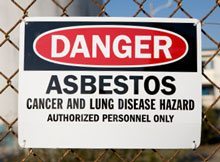Predicting the Risk of Death from Mesothelioma

New research suggests that the risk of death from mesothelioma does not always hinge on disease type or overall health.
Researchers in Brazil and at Mayo Clinic have identified some subtle mesothelioma risk factors that only pathologists can see.
These factors go beyond the characteristics of the mesothelioma cells themselves. The study shows the environment around the tumor, the number and type of immune system cells at the tumor site, and even how many cells are in the tumor can all impact the risk of death from mesothelioma.
Understanding the Risk Factors for Mesothelioma
Asbestos exposure causes most cases of mesothelioma. But not everyone who encounters asbestos gets cancer. Genes and certain lifestyle factors may influence whether an exposed person contracts malignant mesothelioma.
The same is true for the risk of death from mesothelioma. Not everyone who receives a mesothelioma diagnosis will die of the disease. Some people, like Paul Kraus, the world’s longest living mesothelioma survivor, live for decades after their diagnosis.
Scientists know that people with the sarcomatoid or biphasic mesothelioma subtypes have a higher risk of death from mesothelioma. These subtypes tend to be less responsive to treatment.
But other factors are not as obvious. A cluster of patients in the Bralizian study had a higher risk of death from mesothelioma. This risk was independent of other known mortality risk factors.
Cluster of Patients with Higher Risk of Death from Mesothelioma
The Brazilian and Mayo researchers examined tumor tissue from 82 mesothelioma patients.
They used a variety of high-end tests including immunohistochemistry, immunofluorescence, and morphometry to evaluate the tumors. Scientists call features of tumor cells “clinicopathologic features.”
The researchers found that two clusters of patients died at higher rates than the other mesothelioma patients. But their higher risk of death from mesothelioma had nothing to do with any features of their mesothelioma cells.
The high-risk patients tended to have tumors with:
- A higher density of mesothelioma cells
- High type V collagen fiber density (Col V)
- Low CD8+ T lymphocytes in the area around the tumor
The patients with one of these characteristics were 2.19 times more likely than other patients to die of mesothelioma within 40 months.
Pathologists can easily see these things if they know to look for them. The researchers conclude that these three factors can help doctors identify high risk patients.
“Morphometric analysis of Col V, CD8+ T lymphocytes, and tumor cellularity can be used to identify patients with high risk of death from mesothelioma,” writes lead author Marcelo Luiz Balancin of the University of Sao Paulo.
Mesothelioma prognosis is another name for mortality risk. Having a clear picture of a mesothelioma patient’s prognosis can help doctors and patients plan the best treatment approach.
Source:
Balancin, M, et al, “An Integrative Histopathologic Clustering Model Based on Immuno-Matrix Elements to Predict the Risk of Death in Malignant Mesothelioma”, May 11, 2020, Cancer Medicine, https://onlinelibrary.wiley.com/doi/full/10.1002/cam4.3111





